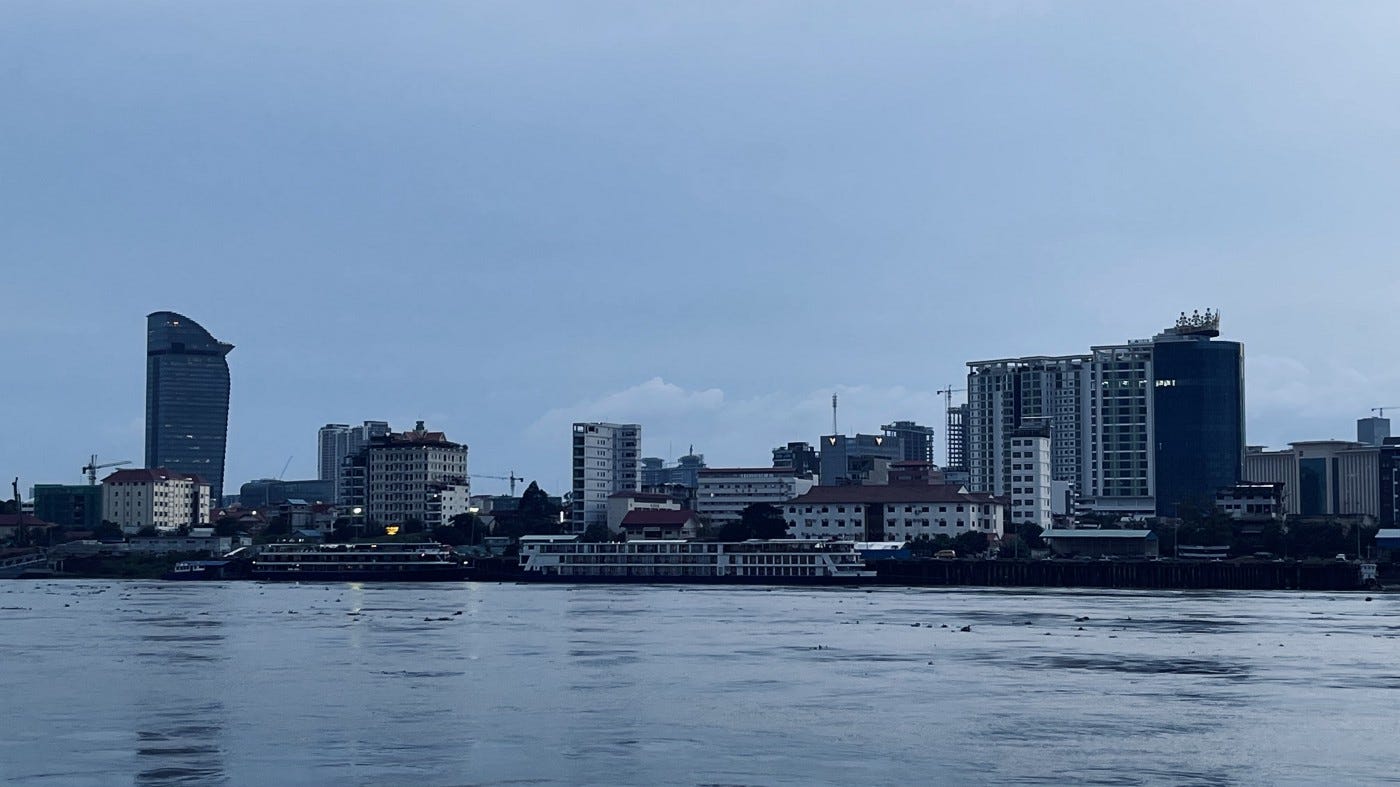Cambodia’s economic recovery uncertain amid Covid
Phnom Penh is a capital that is bustling with economic activity, usually congested by morning and evening traffic, but has now turned quiet due to the resurgence of the Covid-19 outbreak on Feb 20.
Phnom Penh is a capital that is bustling with economic activity, usually congested by morning and evening traffic, but has now turned quiet due to the resurgence of the Covid-19 community outbreak on February 20.
Now nearly six weeks on, more and more public and private institutions are closing their doors and instead transitioning online. Meanwhile, some businesses in the tourism and entertainment sector which have just recently reopened are now closed.
The shift to economic recovery in Cambodia remains uncertain, as the country’s third community outbreak has turned out to be the worst yet since the pandemic began on January 23 last year.
The Ministry of Economy and Finance has predicted an economic rebound and a GDP growth of four per cent in 2021, but this forecast could be off the mark if the government cannot quickly contain the pandemic. With new infections reported every day, it remains to be seen as to when the country can get back to some semblance of normality, though authorities have imposed curfew and restrictions on certain activities at Covid-19 hotspots in a bid to break the chain of transmission.
Last year, a third-round survey on the economic impact of Covid-19 conducted by Angkor Research and Consulting in collaboration with Future Forum — which included interviews with more than 1,000 households in five central economic regions of the country — found that 22.4 per cent of businesses that were active in June ceased operations in October.
Even so, businesses that are still operating had raised household incomes by around 65 per cent in October compared to the difficult period in June, when the total number of Covid-19 infections was only 141 across the nation. But the number had jumped 1,685 per cent by the end of March, according to the Johns Hopkins University database.
Cambodia is not different from other developing countries in the region, as tourism and garment are the most complex, worst-hit sectors that will take time to recover. In the first nine months of 2020, international arrivals reached just 1.25 million, down 26 per cent over the same period in 2019. Siem Reap, the most popular tourist destination, experienced a 74.6 per cent drop in international tourists in the first half of 2020. Economists predicted a loss of $3 billion in tourism with more than 16,891 left unemployed. Particularly, a report released recently in October by The Asia Foundation found that over 90 per cent of small and medium-sized businesses in tourism experienced a decline in sales, revenues and eventually closed.
The garment sector is not spared, with 129 factories shut in the past year, affecting 71,202 workers. This is not to mention an unknown number of those in the informal economy and entertainment workers who have lost their jobs amid the shutdown.
Regardless, the authorities have implemented the eight-round of the government’s cash handout programme between April and June to support the poor and vulnerable as well as garment, tourism and transport workers affected by the pandemic.
Job lossesin the labour sector is a burden, but the return of migrant workers amid the pandemic is a double burden. More than 150,000 migrant workers have returned home since the Cambodia-Thailand border shut in March 2020. All these workers are expected to enter the agricultural sector. Despite that, agriculture does not need more workers, while employees in this sector continue to migrate to another industry because they do not benefit more from the industry while new technologies can reduce the workforce. Yes, agro-processing is possible — but regrettably, Cambodia is not yet well prepared to develop this sector.
Generally, we can notice that the economic shock this year will be greater than the past year. Simultaneously, Angkor Research also found that household debt grew by 2.3 per cent in October, paralleled to June. Loans are mainly used for daily expenses and buy food, repay other loans and get healthcare services.
In terms of debt, a recent result of the national socio-economic survey for 2019–2020 of more than 10,000 households revealed that 1.25 million homes were in debt, up 2.5 per cent compared to 1.22 million in 2017. The report estimates the amount of indebted households to be 3.6 million throughout the country. According to this survey, average household debt is between $2,400 and $4,400. This time, we are very concerned about their ability to repay loans and to work well in the financial system.
Indeed, with the main dilemmas in 2020, combined with a better coronavirus situation than this year, Cambodia recorded the economic growth negative of 3.1 per cent. For this year, the government would have to tighten its belt as the national budget decreases by 1.9 per cent compared to last year. Apart from a high level of policy coordination, we cannot see any other path forward in the economic recovery if the current situation drags on until May — we will not meet the GDP growth target.
It is understandable that the authorities are overwhelmed with work given the current situation. Economic recovery is essential, but more importantly, citizens’ health and life are paramount.
Imposing curfew and other restrictions and maintaining good hygiene habits are the best short-term mechanism to deal with the pandemic, though this is not viable in the medium- and long-term. With that, the government should continue to encourage people to get vaccinated and procure more vaccines. While Covid-19 vaccine is not a cure-all, it is the best instrument to minimise risks posed by epidemics.



